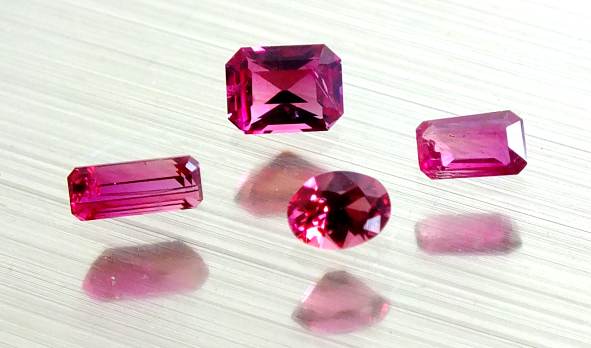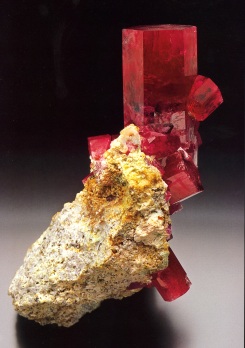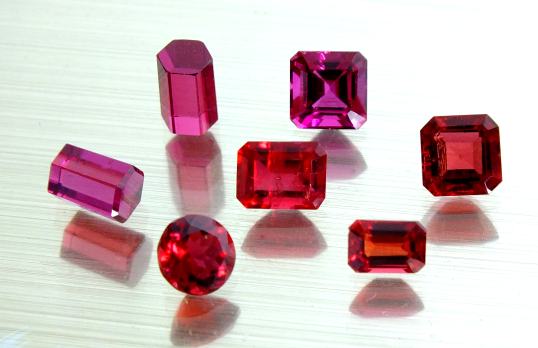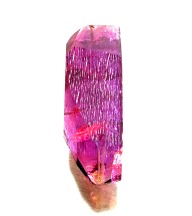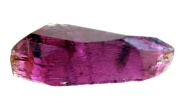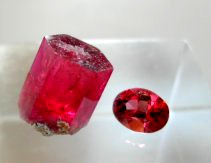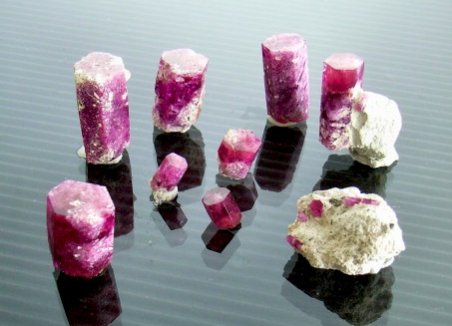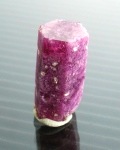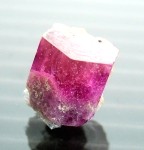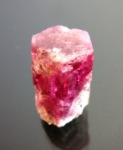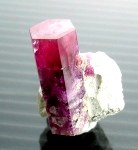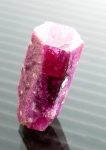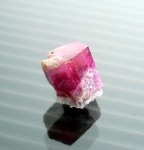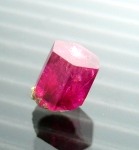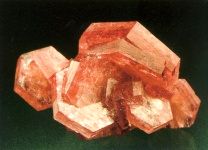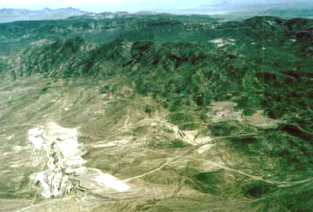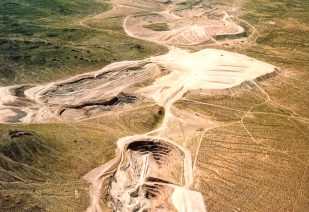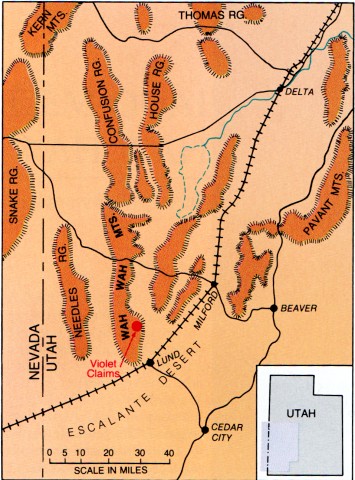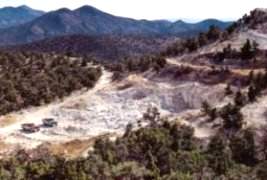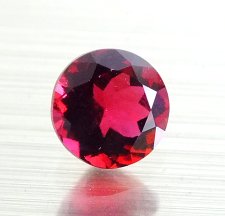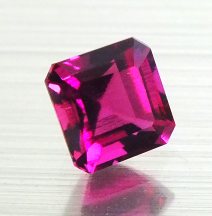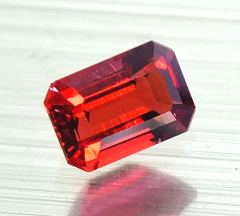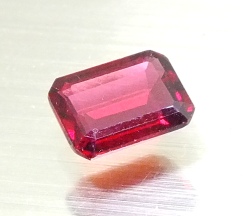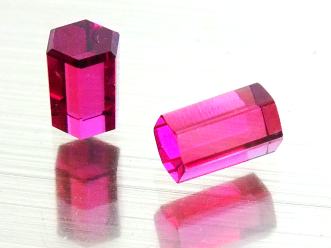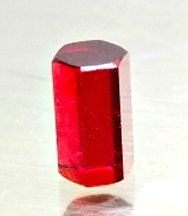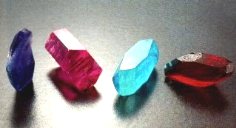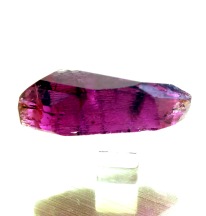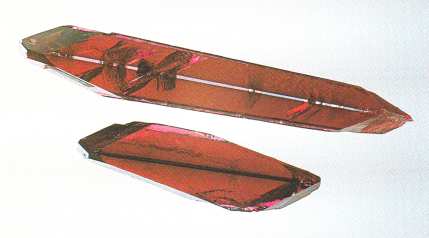多彩な色彩を持つ緑柱石の中に赤紫のレッド・ベリルがあります。
最初に赤いベリルが発見されたのは,1905年、美しいトパーズの結晶で有名なアメリカ,ユタ州のトーマス山脈の流紋岩中の半透明の小さな結晶でした。 その後ユタ州の各地,ニューメキシコの
Black 山脈、メキシコの San Luis Potosi
等から報告されていますが、いずれも質,量ともに標本程度の産出で,重要な産地とは言えませんでした。
半世紀後の1958年、ユタ州のトーマス山脈から南におよそ200km、ワーワー山地
(Wah Wah Mtns) の標高2100m地点にある The Violet Claims
(すみれヶ丘鉱区とでも言うのでしょう)にてウラン探鉱をしていたホッジス一家により宝石級の結晶が発見されました。
最大でも長さ5.5cm、平均では長さ1cm、直径が5mmと小さな結晶です。
六角柱状の結晶の多くは無数の亀裂と包有物とで不透明から半透明ですが、部分的に透明な部分があり,そこから宝石用途のルースをカットすることが出来ます。
しかし、過去最大のルースでも7カラットの大きさで、1カラットを超えるものは年に2,3個程度、大半は0.5ct以下で平均は0.15ctの小さいルースが年に100個程度採れるだけです。
あらゆる宝石の中で,もっとも稀少な宝石といっても過言ではありません。
もちろん、ただ珍しいというだけの宝石なら、他にいくらでもあります。
しかしレッド・ベリルはルビーにも匹敵する魅力的な色合い、モース硬度も高く耐久性は十分,その上極めて稀、と三拍子揃った宝石です。
いわば、美女揃いと評判の緑柱石姉妹の中で,一番最後に生れた極め付きの美少女とでも言える存在です。
It
was in 1905 at Thomas Range, Utha, renowned topaz crystal locality,
that small semi-transparent red color beryl was first discovered in
rhyolites.
In 1958, half century lator from the first discovery, gemmy red beryl deposit
was discovered and staked by Lamar Hodges, while prospecting for uranium,
at The Violet Claims in Wah Wah Mountains, about 200km south from Thomas
Range. Besides the Violet Claims, several other occurrenses of red beryl
(all in rhyolites) are known, but none has produced significant quantities
of facet-grade material. These includes: Utah - wildhorse Spring, Topaz
Valley, and Starvation Canyon, all in the Thomas Range, Juab County, New
Mexico - Beryllium Virgin prospects in Paramaount Canyon, Black Range,
sierra County, and East Grants Ridge, Cibolas County; and Mexico - San
Luis Potosí.
Red beryl crystal is, in
general small, the largest one 5.5cm, average 1cm long and 0.5cm in
diameter, and hexagonal prysmatic crystals are heavily included and
opaque to semi-transparent. A small transparent portion is cuttable
to yield small faceted stones ; mostly less than 0.5 carat and about
100 pieces of average 0.15 carat stones are obtained with a few over
one carat size stone are obtained annualy. So far, red beryl is
certainly one of the rarest
gemstone.
